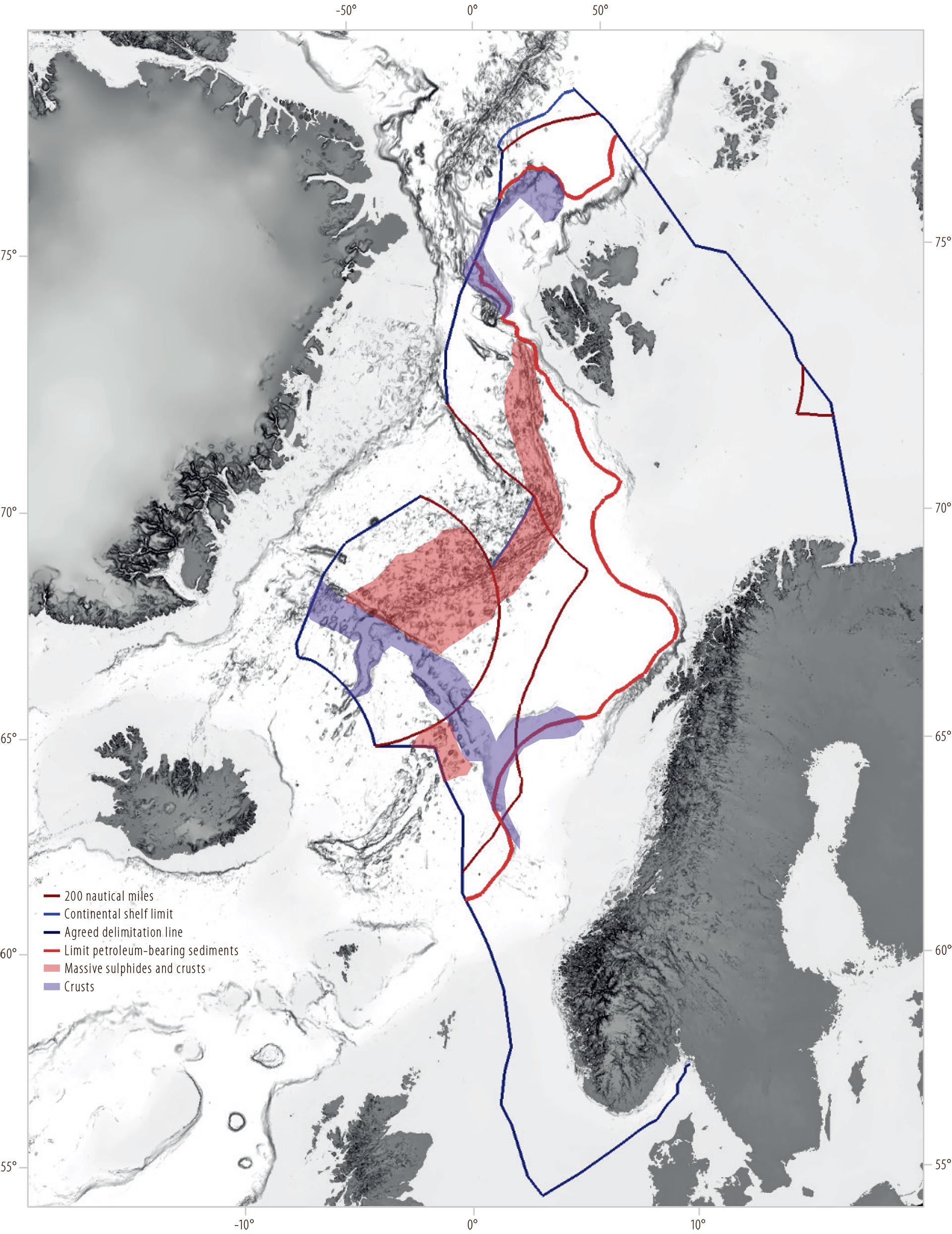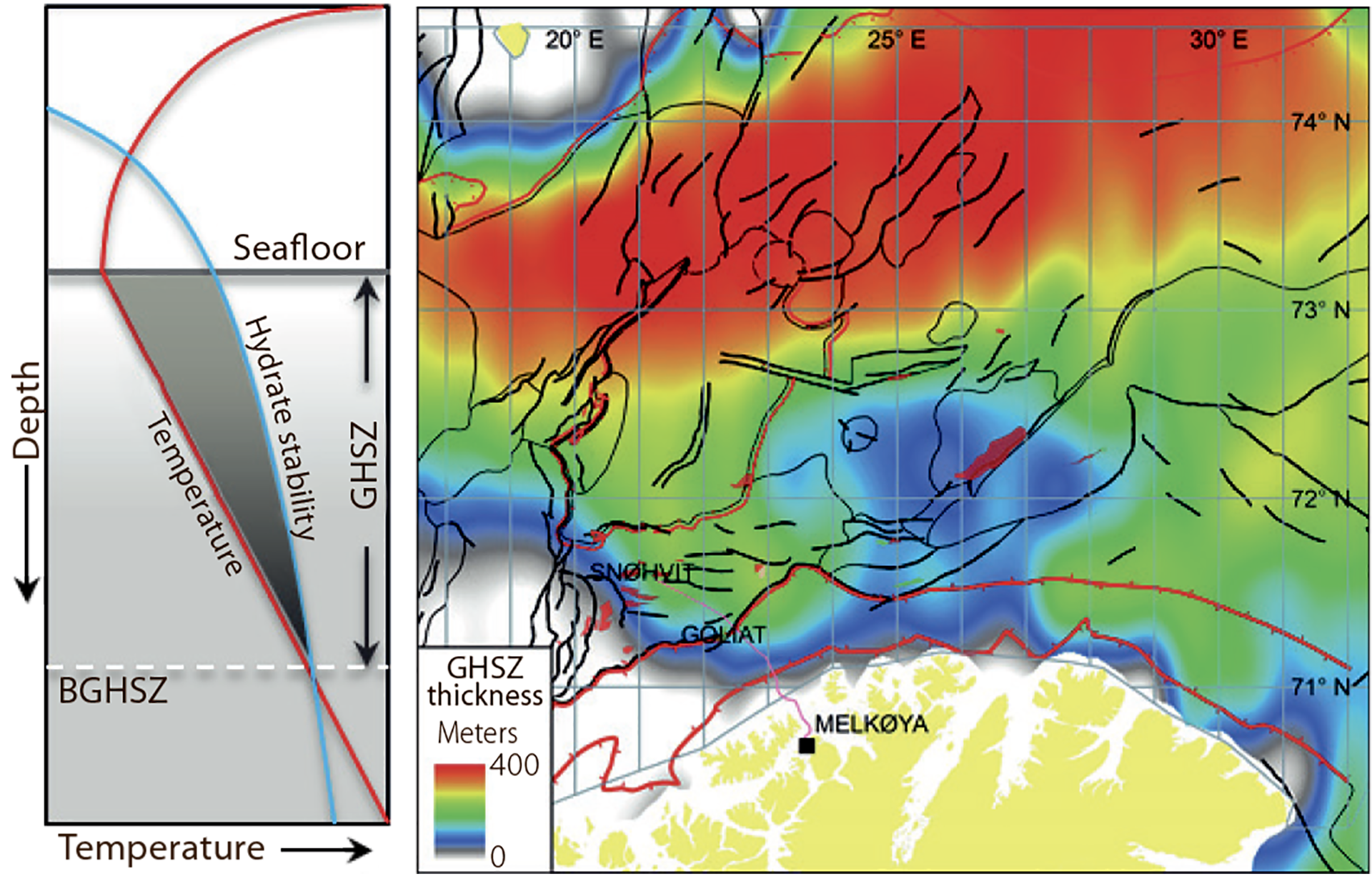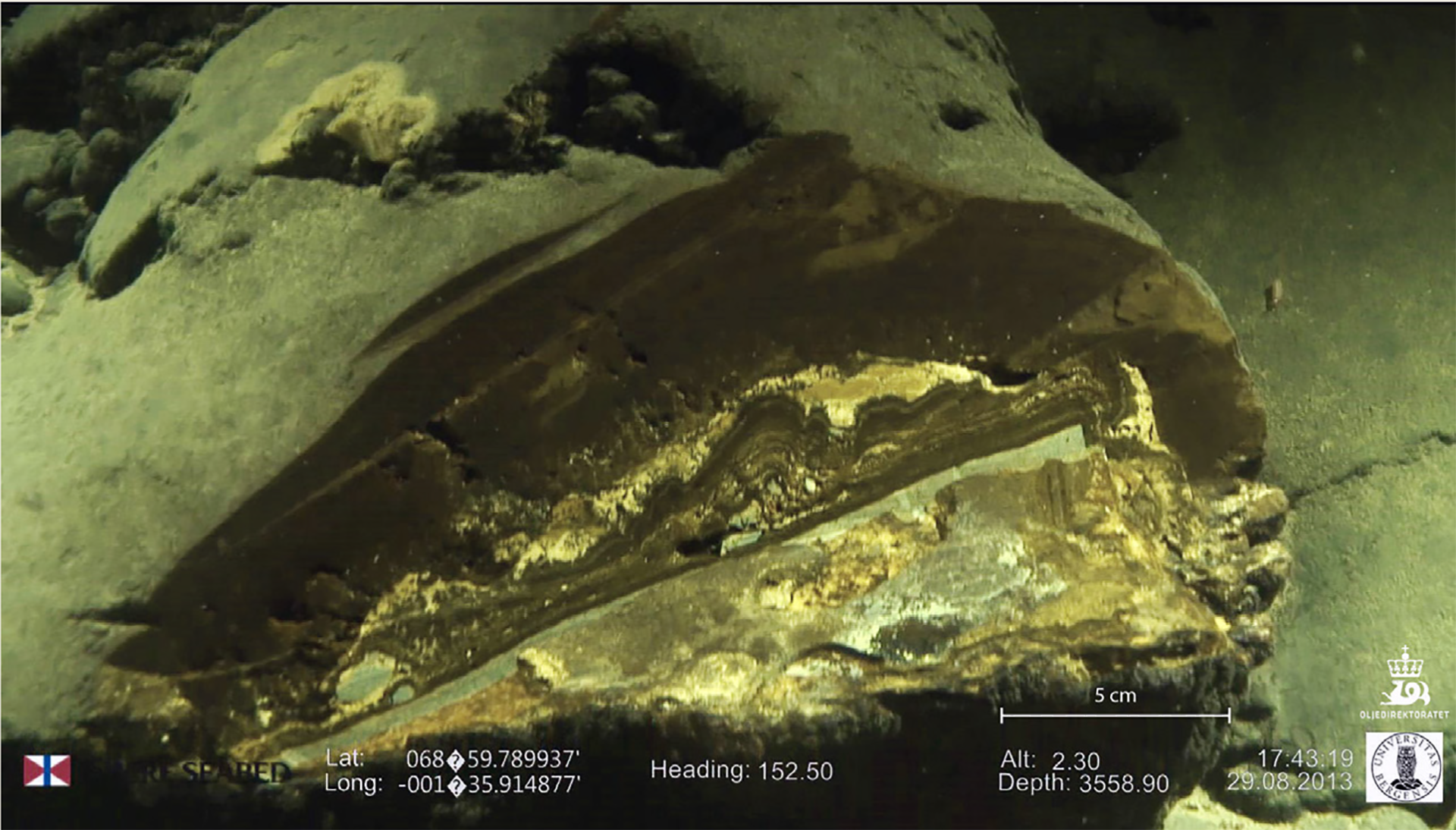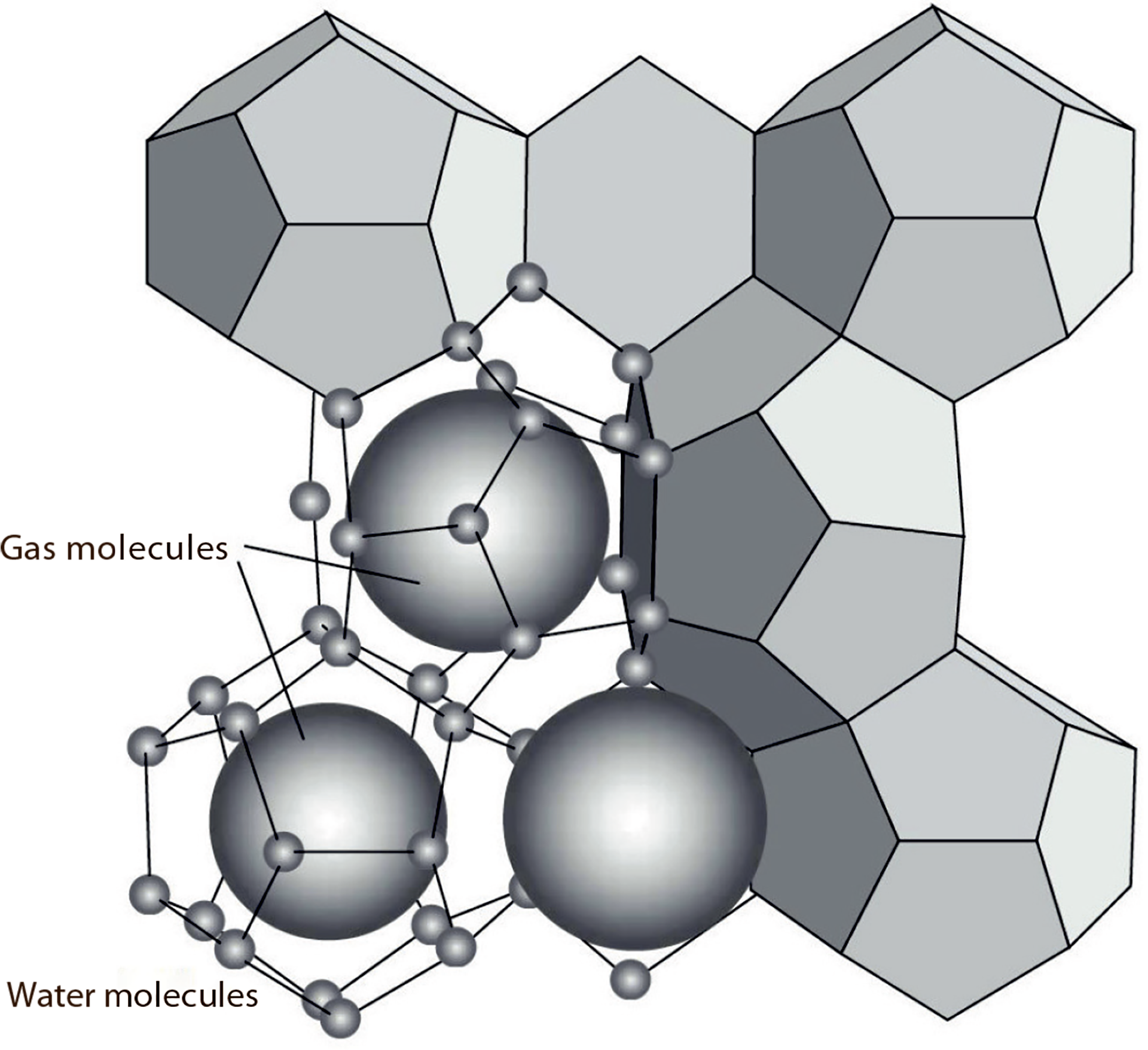Resources for the future: Seabed minerals and gas hydrates
The Norwegian continental shelf – more than oil and gas
The increased attention being paid to producing energy with a low carbon footprint is expected to boost demand for gas and renewables. Developments with renewable energy sources and battery technology call for access to substantial quantities of minerals with rare-earth elements (REEs). Mapping has shown that such resources could also be present on Norwegian territory. The NPD is due to launch its own investigations in the summer of 2018 to improve understanding of the resource potential on the Norwegian continental shelf (NCS).
Energy production with a low carbon footprint could mean rising demand for gas and minerals with REEs. Renewable energy output and the associated need for battery storage is expected to grow (fact box 8.1). It has long been known that big deposits of minerals with REEs could exist in the deep oceans.
FACT BOX 8.1:
|
||||||||||||||||||||||||||||||||||||||||||||||||||||||||||||||||
|
Growing demand for renewable energy sources such as sun, wind and water increases the need for a range of minerals. These include those containing elements categorised as REEs by the International Union of Pure and Applied Chemistry (Iupac), which are necessary components in such products as wind turbines, solar panels and electric cars. Old light bulbs are being replaced by modern and more efficient LED versions, and petrol/diesel engines by electric motors. At the same time, the world wants to remain at an advanced technological level with ever-newer mobile phones, TVs, computers, cameras and other devices dependent on powerful but miniaturised batteries. That calls for large quantities of such materials as lithium, copper, cobalt, manganese, nickel, yttrium, lanthanides, neodymium and cadmium. Thin low-cost solar panels need tellurium (a byproduct of copper and lead refining), while lithium and cobalt are used in efficient modern batteries. The first of these is primarily extracted today from saline flats (salars) in North and South America. Cobalt is a byproduct of refining nickel, silver, lead and copper ores, with the Democratic Republic of the Congo as the biggest source. Employed as a catalyst in hydrogen fuel cells, platinum comes almost wholly from South Africa. Neodymium is used in making powerful magnets for electric cars and wind turbines. Today’s mobile phones can contain up to 62 different metals, including as many as 10 REEs. Ores containing the metals in demand are not renewable resources. And, despite steadily growing demand, these materials are recycled in only limited quantities because this involves handling very small quantities in complex entities. Thin layers of metal and metallic alloys must be separated from plastic, glass and other components with the aid of demanding and environment- unfriendly processes. Alternative sources of REEs must therefore be found if expected future demand is to be met. The table shows an overview of elements representing relevant resources.
Table 8.1
|
SEABED MINERALS
On 1 April 2017, the Ministry of Petroleum and Energy (MPE) was given administrative responsibility related to prospecting for and recovering mineral deposits on the NCS. Administrative authority for seabed minerals has been delegated to the NPD. That includes mapping resources, compiling resource accounts and following up the industry’s activities, as well as providing technical and economic advice to the MPE. Little exploration for mineral deposits has so far taken place in Norwegian sea areas, and the applicable legislation is not designed for such activity. The MPE is therefore working on a new Act covering mineral recovery from the NCS.
Where the NCS is concerned, seabed minerals are known to exist in the deep parts of the Norwegian Sea (figure 8.3). The University of Bergen (UiB) made the first discoveries of “black smokers” there more than a decade ago (fact box 8.2). Drawing in part on the NPD’s large multibeam bathymetric data set from these waters, the UiB identified a number of sulphide deposits (both smokers and mounds) along the volcanic Mohn Ridge between Jan Mayen and Bjørnøya and further north. Samples have since been taken from a number of sulphide deposits and crusts while mapping the Norwegian Sea in a multi-year research partnership between the UiB and the NPD.
FACT BOX 8.2:
|
|
Manganese nodules lie on soft seabeds at great ocean depths, and contain large amounts of manganese and iron with smaller quantities of copper, nickel, cobalt, titanium and platinum. They are not expected to occur on the NCS. Manganese crusts also consist largely of manganese and iron, plus small quantities of titanium, cobalt, nickel, cerium, zirconium and REEs. They grow as laminated deposits on bare bedrock exposed at the seabed, typically in water depths of 800-2 500 metres. As with manganese modules, elements precipitated from seawater become concentrated in such crusts.
Figure 8.1
|

Figure 8.3
Areas of the NCS with possible deposits of seabed minerals.
In addition to the Norwegian Sea deposits, manganese crusts could be present around the Yermak Plateau in the Arctic Ocean north of Svalbard.
The NPD has carried out chemical analyses of thick manganese crusts on the steep slopes of the Jan Mayen Ridge and the Vøring Spur. These have revealed that manganese crusts in the Norwegian Sea fall into two groups in terms of their lanthanide content. One has twice the amount found in Pacific and other Atlantic sources, the other has less. Both groups contain substantially more lithium (20-80 times as much) and scandium (four-seven times) than similar crusts in the Pacific and the rest of the Atlantic. These two metals are both expected to be in demand.
A data acquisition expedition focused on sulphides was conducted during 2017 by the NPD in collaboration with the UiB on the Mohn Ridge. Plans for 2018 include a large survey concentrated on massive sulphide deposits from inactive hydrothermal systems and a separate mission focusing on iron-manganese crusts.
GAS HYDRATES
Natural-gas hydrates could become a future energy source. They are present in large quantities immediately beneath the seabed in some parts of the Norwegian and Barents Seas. Their extent is likely to be greatest in the Barents Sea, where deposits appear to extend over large areas.
FACT BOX 8.3: What are gas hydrates? |
|
Natural-gas hydrates are gas in a solid form which primarily comprises methane and water. They have a crystalline structure where the water molecules act as a lattice enclosing the gas (figure 8.4). Gas hydrates are found beneath the permafrost in Arctic regions and under the seabed in ocean depths with high pressure and low temperature (typically more than 60 bar and below 10°C). They represent a highly condensed form of natural gas bound in water. A cubic metre of hydrate corresponds to 160 cubic metres of natural gas at atmospheric conditions. This substance forms in a region known as the gas hydrate stability zone (GHSZ). In a maritime environment, hydrates lie beneath the seabed and the thickness of the GHSZ is defined by the ambient water temperature, sea level, geothermal gradient, gas composition and salt content of sedimentary pore water (Chand et al, 2012).
Figure 8.4
|
Water depths on the Barents Sea’s continental shelf go down to 500 metres. Seabed temperatures can be 0°C or lower. That means the thickness of the GHSZ may be anything from a few tens of metres to 400 metres, depending on gas composition and geothermal gradient (figure 8.5, based on Chand et al, 2012).17 18
17 Chand, S, Thorsnes, T, Rise, L, Brunstad, H, Stoddart, D, Bøe, R, Lågstad, P and Svolsbru, T (2012). “Multiple episodes of fluid flow in the SW Barents Sea (Loppa High) evidenced by gas flares, pockmarks and gas hydrate accumulation”. Earth and Planetary Science Letters, pp 331–332, 305-314.
18 Maslin, M, Owen, M, Betts, R, Day, S, Dunkley Jones, T and Ridgwell, A (2010). “Gas hydrates: past and future geohazard?” Philosophical Transactions of the Royal Society A: Mathematical, Physical and Engineering Sciences 368, pp 2369-2393.
Figure 8.5 presents the thickness of the GHSZ. Its thickest extent in the south-western Barents Sea coincides with the deepest part of the continental shelf there. In this area, gas hydrates could act as a cap over hydrocarbons in shallow reservoirs. They have been found on the Vestnes Ridge west of Spitsbergen, and good indications of methane hydrates exist in the Bjørnøya Basin.
The NPD is involved in a number of projects related to research on gas hydrates, in collaboration with the Centre for Arctic Gas Hydrate, Environment and Climate (Cage) at the University of Tromsø – the Arctic University of Norway (UiT). Attention in recent years has concentrated on understanding how gas hydrates affect petroleum systems and pressure.
No commercial method has so far been found for producing gas hydrates, but research into such solutions is being pursued internationally.



